JEAN SHIN
Born 1961, La Jolla, CA.
Lives and works in Brooklyn, NY and San Diego, CA.

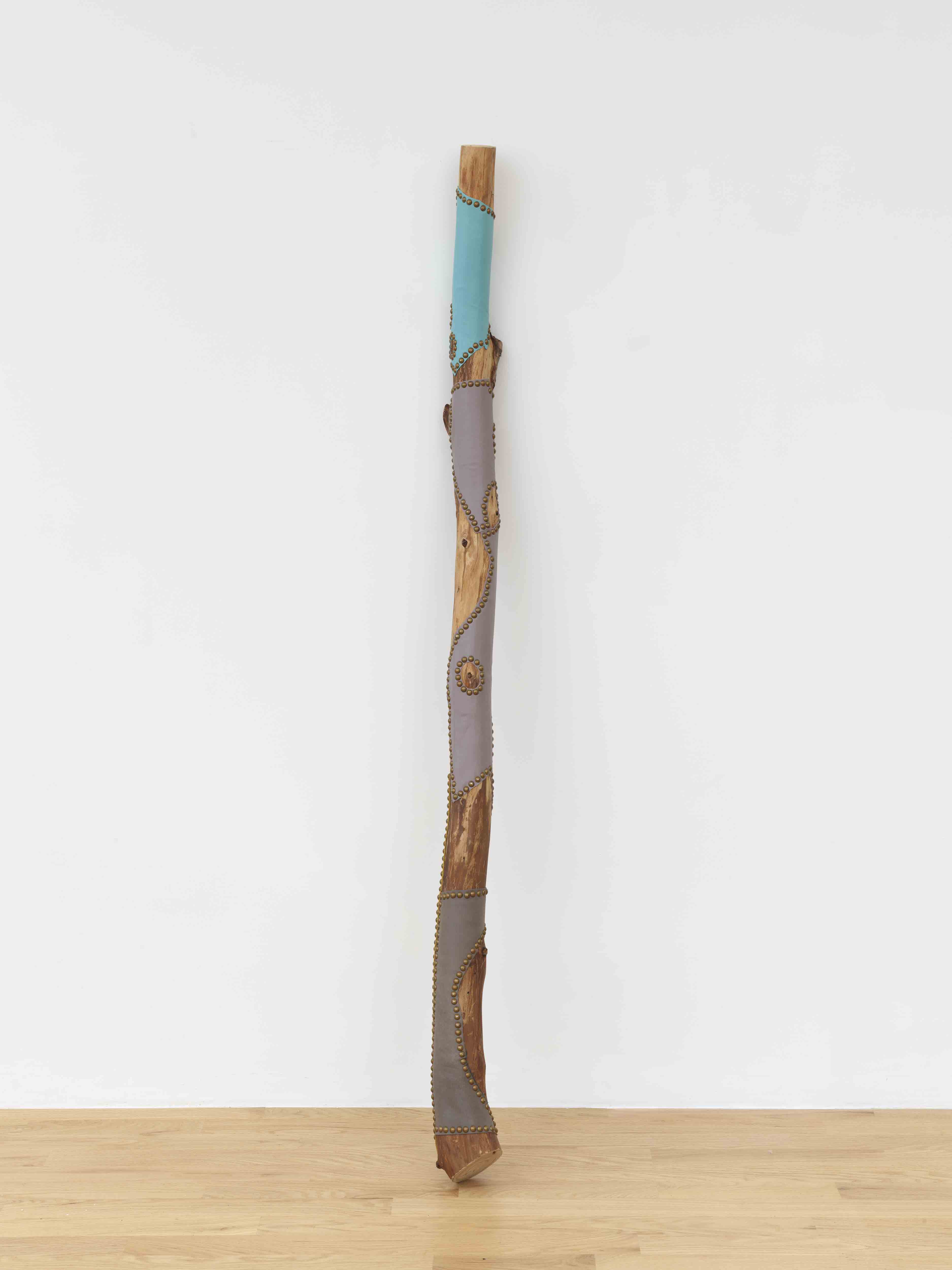



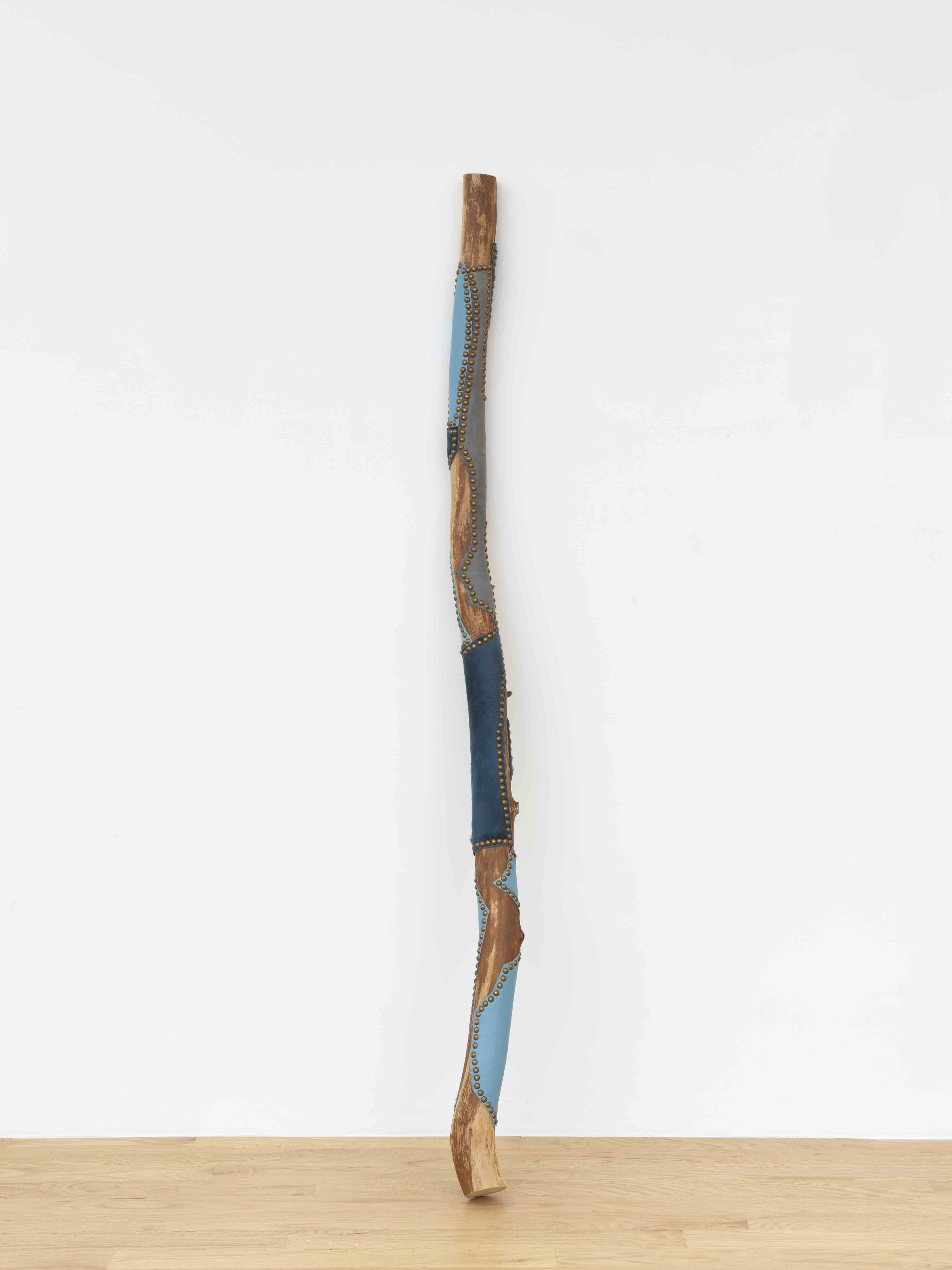

Jean Shin creates large-scale installations from large stockpiles of often discarded or donated everyday objects, calling to mind the rampant material excess fostered by our contemporary consumer culture, and the unsustainable ecological damage it leaves in its wake.
Earlier in 2021, Shin took to the task of transforming a 140-year-old fallen hemlock tree that occupied a prominent spot on the former New York estate of Frederic Edwin Church, a central figure in the Hudson River School. The native hemlocks were highly sought after for their bark, which contains tannins that were used to convert animal hides into leather, a then thriving industry that collapsed in the Catskill region when hemlocks and other trees were aggressively deforested.
Over a period of weeks, Shin carefully debarked the historic conifer, even using borrowed 19th-century tools to complete the undertaking. Once the tree was stripped, and its bark ceremoniously gathered underneath it, Shin began to cover the tree trunk in a bespoke armature of leather scraps discarded by fashion houses, fastening the pieces to the wood with upholstery tacks. For 8 Americans, Shin presents limbs from that very same hemlock, which she’s similarly enveloped in unique leather trappings, in a process that connects past histories with the present effects of human intervention on the natural world.
Earlier in 2021, Shin took to the task of transforming a 140-year-old fallen hemlock tree that occupied a prominent spot on the former New York estate of Frederic Edwin Church, a central figure in the Hudson River School. The native hemlocks were highly sought after for their bark, which contains tannins that were used to convert animal hides into leather, a then thriving industry that collapsed in the Catskill region when hemlocks and other trees were aggressively deforested.
Over a period of weeks, Shin carefully debarked the historic conifer, even using borrowed 19th-century tools to complete the undertaking. Once the tree was stripped, and its bark ceremoniously gathered underneath it, Shin began to cover the tree trunk in a bespoke armature of leather scraps discarded by fashion houses, fastening the pieces to the wood with upholstery tacks. For 8 Americans, Shin presents limbs from that very same hemlock, which she’s similarly enveloped in unique leather trappings, in a process that connects past histories with the present effects of human intervention on the natural world.
RELATED WORK — FALLEN at Olana State Historic Site, 2021
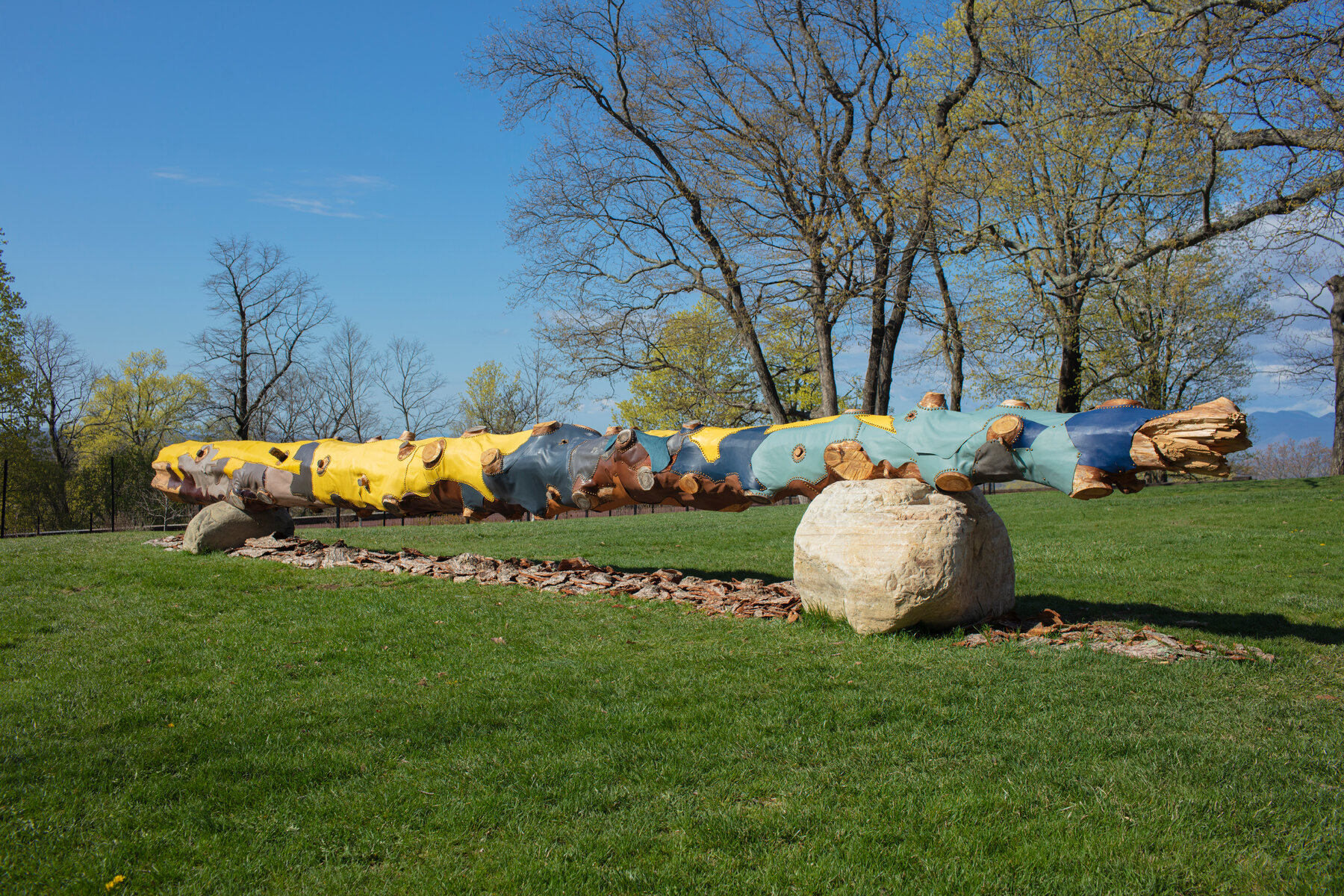

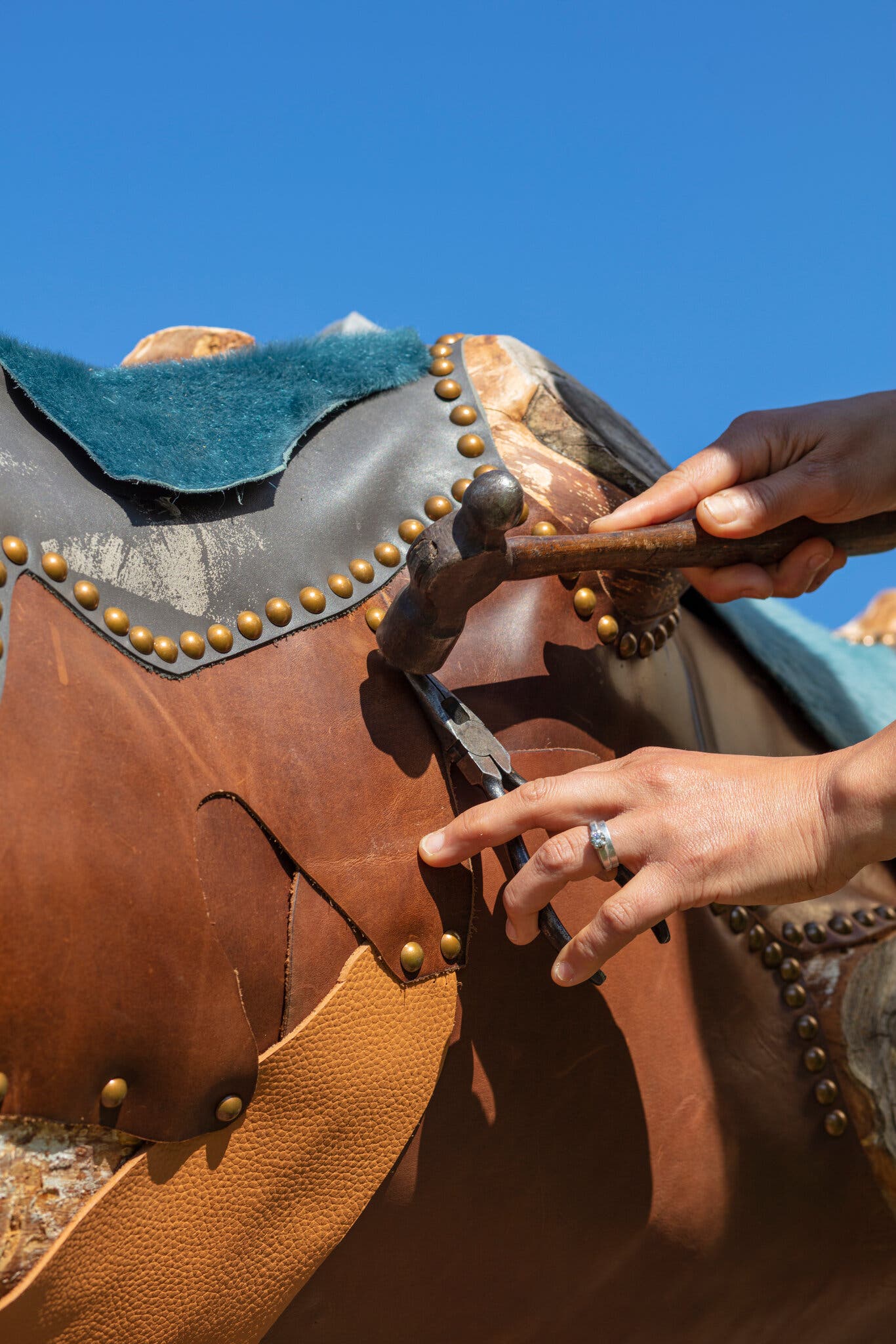


Installation and details views of FALLEN at Olana State Historic Site, Husdon, NY. Courtesy the Artist and Olana. Photos by Amanda Picotte for The New York Times.
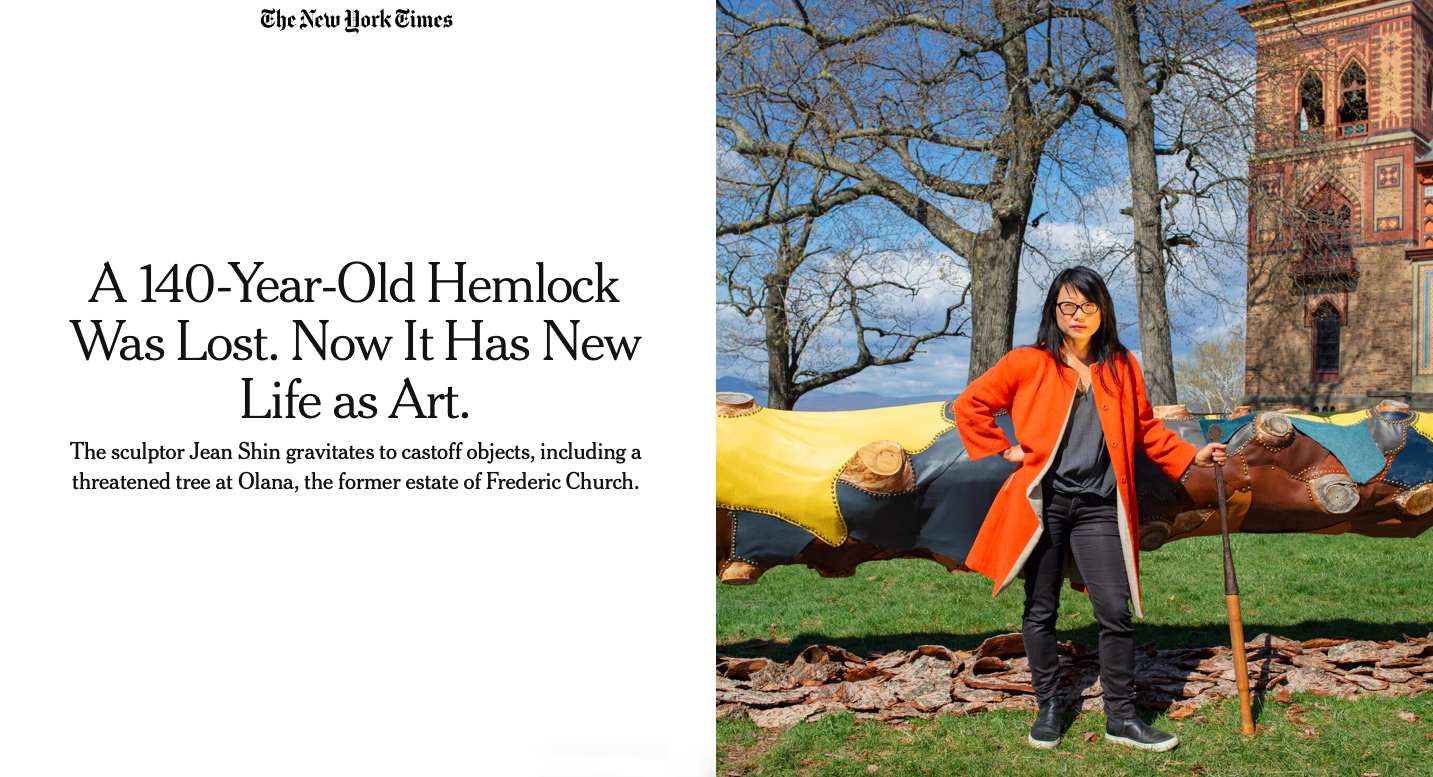
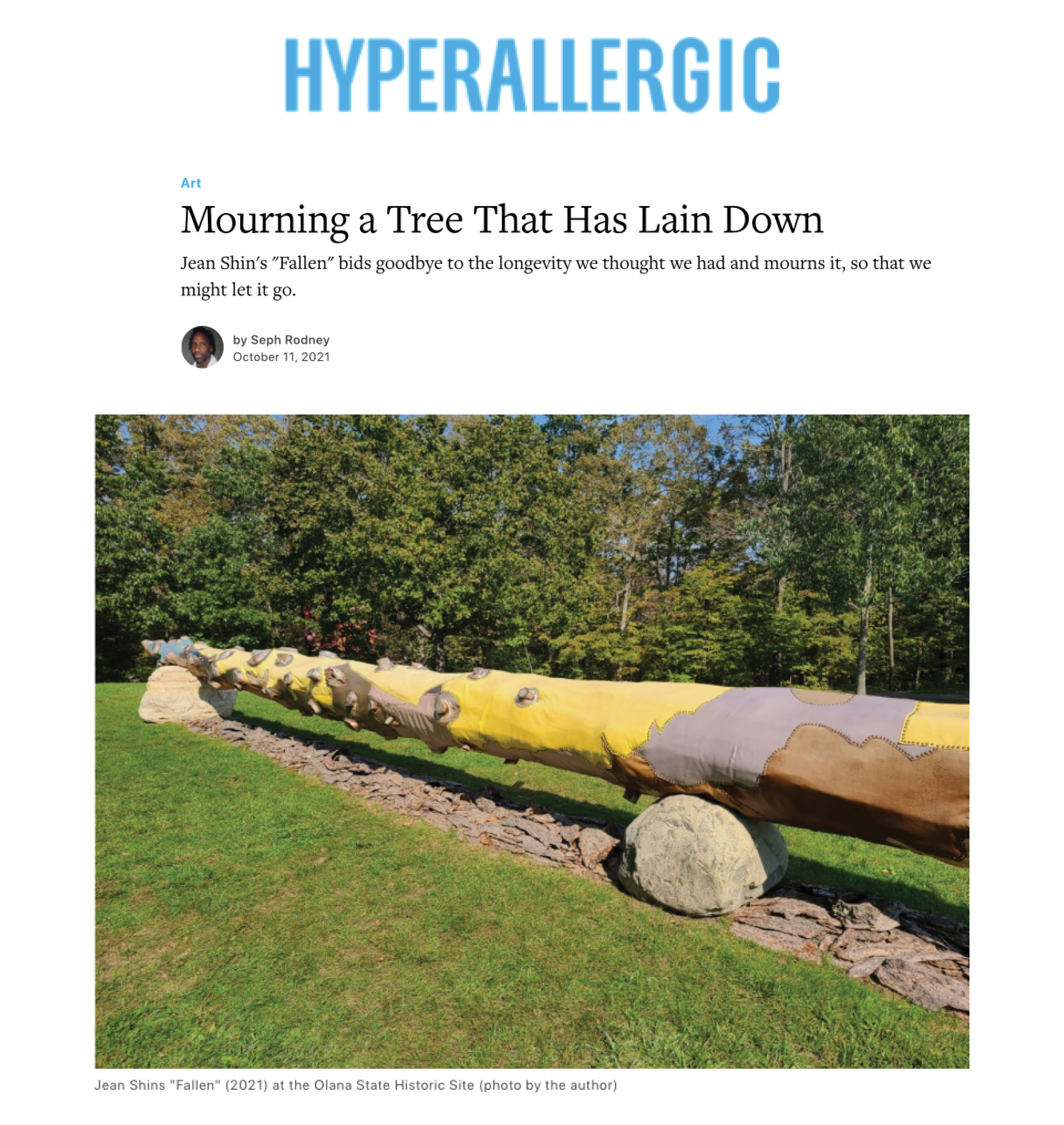
Nationally recognized for her monumental installations, Jean Shin transforms everyday objects into elegant expressions of identity and community engagement. She has had numerous solo exhibitions at prestigious institutions such as the Museum of Modern Art, New York; Smithsonian American Art Museum, Washington, D.C.; Philadelphia Museum of Art, PA; Asian Art Museum, San Francisco, CA and Storm King Art Center in N.Y. More than 150 prominent cultural institutions, including the New Museum, Brooklyn Museum, Museum of Fine Arts Boston, Museum of Fine Arts Houston, Asia Society, Barnes Foundation, and Museum of Art and Design, have featured her work.